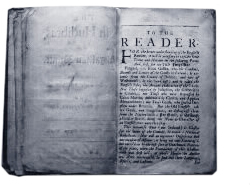


|
Please note that the desire for an independent education that you cannot afford to buy for your child on your own is no reason to apply to a grant-giving trust. Such applications will be rejected. |
Print off and complete the application form below. |
|
By completing and submitting a grant application to the Westminster French Protestant School Foundation you consent to your personal information being held for the time during which assistance is provided and for such period thereafter as the Secretary may require but not normally exceeding five years. Additionally, genealogical information including family trees and copies of Birth and Marriage Certificates may be passed to the Huguenot Library for historical purposes only. You also have certain rights under existing data protection laws, including:
Any requests for information should be made to the Secretary. Please note that if you withdraw your consent to the use of your personal information for purposes set out in our Privacy Policy, we may not be able to provide you with access to our services. |
The Foundation
The School Although the regime had Dickensian overtones, Madame Flecknoe had the respect and love of her pupils. She had to make all the girls’ dresses herself and her successful management of the school was evident in the admirable qualities of the pupils when they left the strictness of school for the rigours of business and domestic life afterwards. Uniform Food There was never any butter or jam but sometimes the girls had treacle on dry bread – the treacle being served from giant size Golden Syrup tins. As for puddings, there was just apple pudding on Sunday and on Saturday apple peelings. For this, the girls used to sit on the wooden stairs to the kitchen and one girl used to go round giving each pupil a handful. When apples were scarce, tapioca pudding took its place. This was made by two of the older girls and when Madame Flecknoe was out of the way, they used to make small extra ones in patty tins. If she was heard approaching, they were hidden in what was known as the beetle cupboard because the kitchen, like most in those days, was infested with large black beetles. The girls also used the grouts from the coffee Madame Flecknoe had – they never had proper coffee themselves. 
Accommodation Washing Otherwise, the girls had a strip-down wash each morning with water being obtained from a cold tap outside on the landing and poured into old-fashioned basins in the bedrooms. 
Cleaning There was even a real-life Cinderella at the school. The older girls laid out and lit the large stove first thing in the morning and one – whoever was on the rota – had to sift the cinders, taking the ash to the dustbin in the outside yard and returning the useable cinders to the fire. A special frock called the ‘cinder frock’ had to be worn by the girl performing the duty which involved swallowing much dust over their years at the school. Studies  Pocket money Choir Going Out Three of the older girls were also allowed to go to see a pantomime in the Princes Theatre in Shaftesbury Avenue. They sat in the gallery, which probably would not have cost more than threepence a head. |
French Church, Norwich In 1902 the Norwich French Church Charity was established by the Charity Commissioners, to be responsible for the income arising from the Church. The Church has recently been sold by the Trustees and the proceeds invested to provide an annual income. Half the income is still given to the French Hospital in Rochester, Kent. The other half is used to help the education and training of Norwich and Norfolk people. Priority is given to those who can trace descent from Huguenot families, and then to those whose education or training is threatened by financial difficulty. If you think that you or a member of your family might qualify for help, please contact Mr GH Smith, Clerk to the Norwich French Church Charity, Hansells Solicitors, 13 Cathedral Street, Norwich NR1 4DS. The French Huguenot Church of London Charitable Trust The French Hospital The Huguenot Society The Huguenot Museum The Directory of Grant-Making Trusts The Educational Grants Directory The ISC Educational Grants Advisory Service Educational Trusts Forum Site published by Westminster French Protestant School Foundation, 5 Poulters Wood, Keston, BR2 6JD |
